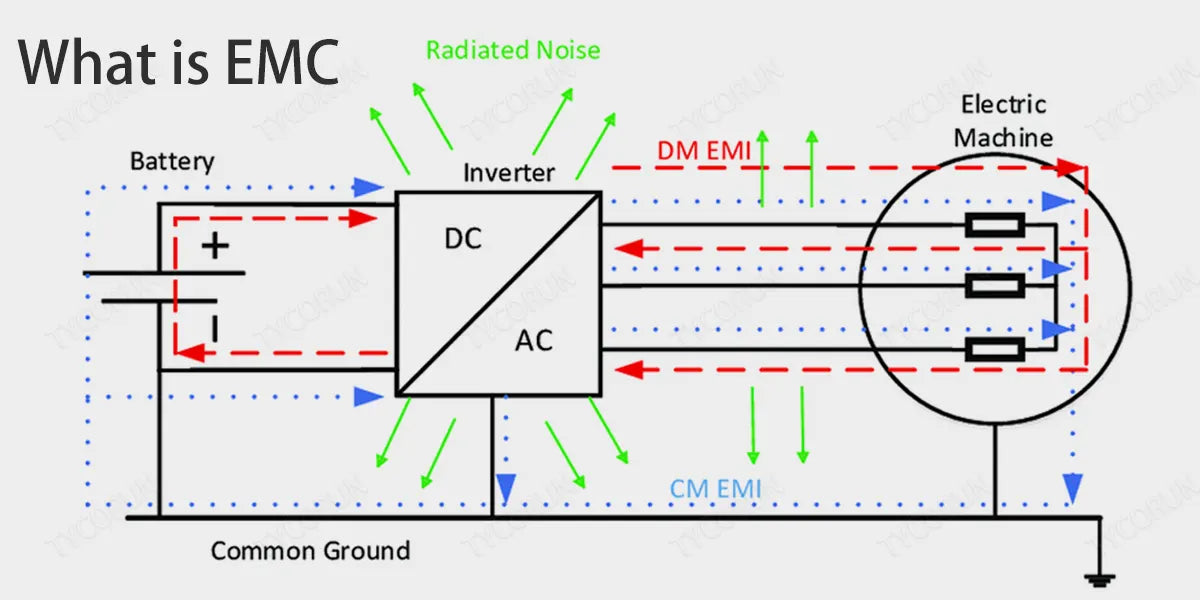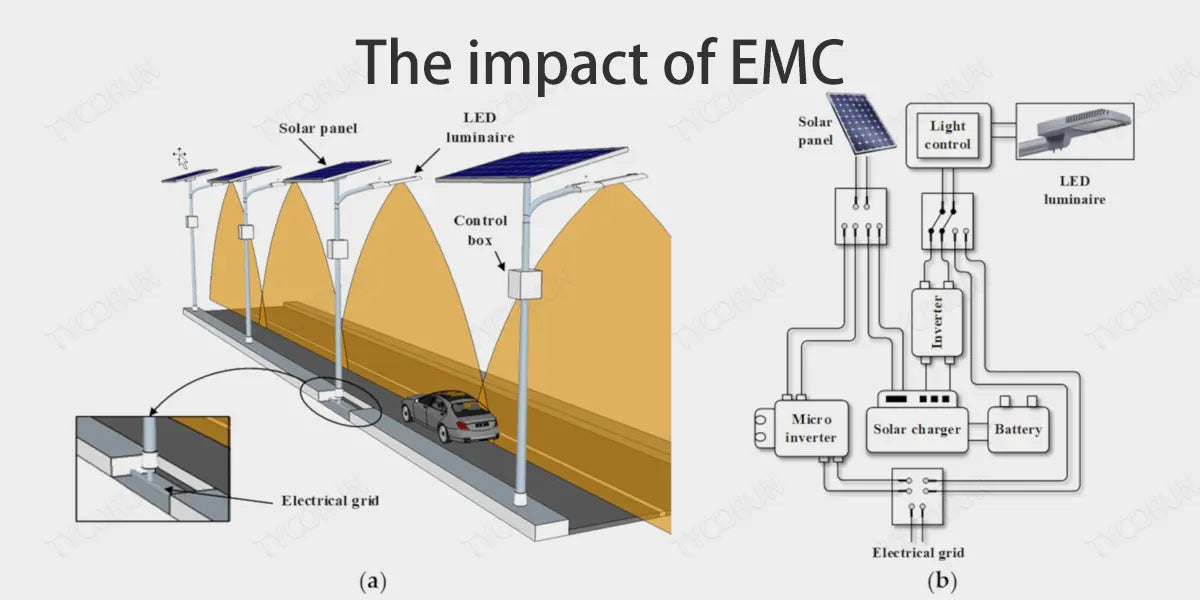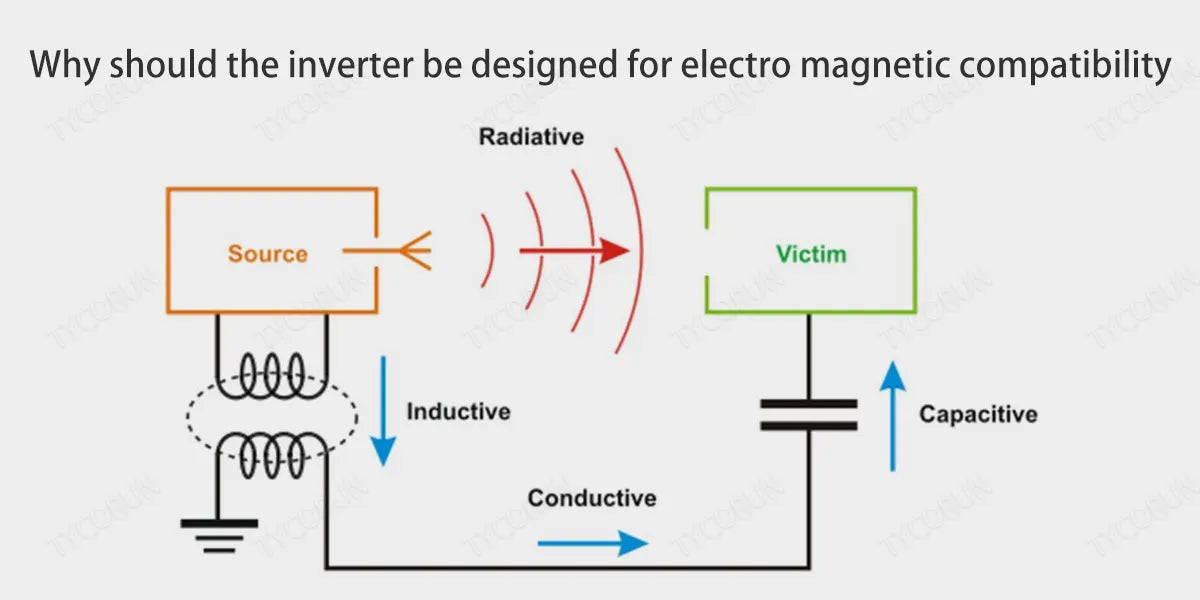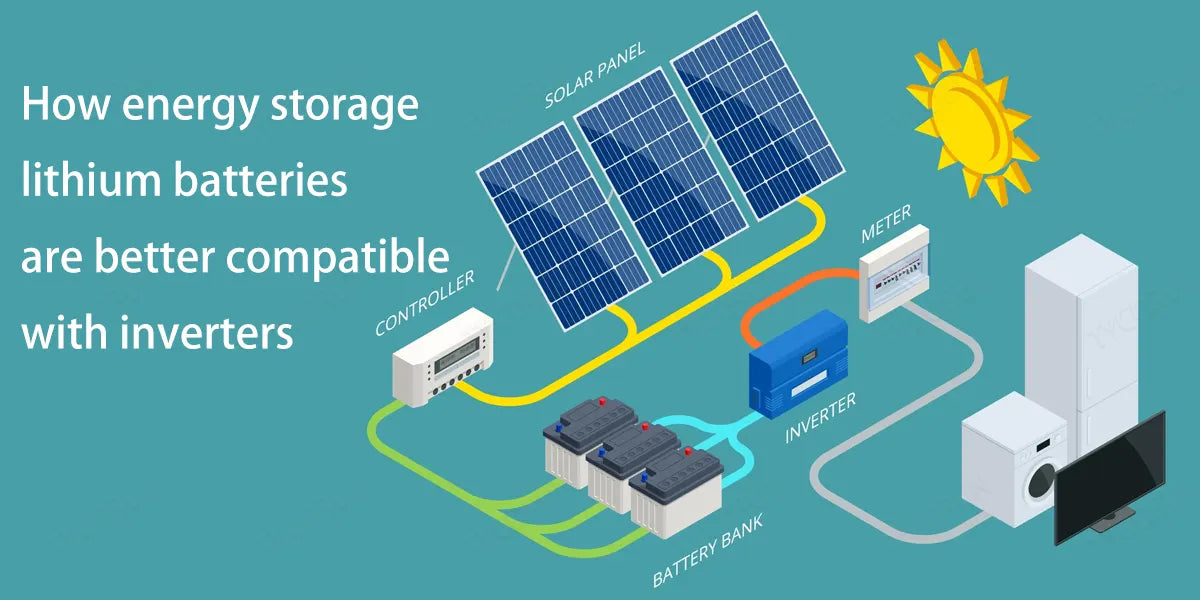
Main content:
In life, we may have encountered situations like this: When you use a hair dryer next to the TV, there will be a small fluctuation in the TV screen when the hair dryer is turned on.
The phone is next to the stereo, and when the call comes, the phone ringtone has not yet sounded, and the stereo has already made a strange "squeak" sound. This invisible and intangible electromagnetic interference exists in our lives at all times.
Electromagnetic interference is part of electro magnetic compatibility (EMC), which is one of the most important indicators to measure an electronic device from a professional point of view. You may wonder what is EMC. Today's article recognizes what is EMC and its compatibility with inverters in PV systems.
1. What is EMC
What is EMC? The electro magnetic compatibility, refers to the electromagnetic interference generated by electronic equipment or systems to the environment during normal operation can not exceed a certain limit.
EMC consists of two parts: EMI (electromagnetic interference) and EMS (electromagnetic susceptibility).
- EMI
The so-called EMI is the electromagnetic interference generated by the machine itself to the external environment and external equipment in the process of performing its due functions.
- EMS
The EMS refers to the anti-interference ability of the machine in the process of performing its due functions without being affected by the surrounding electromagnetic environment.

In layman's terms, what is EMC means that electromagnetic interference generated by an electronic product itself does not affect other products. Electromagnetic interference from the outside world also does not affect the normal operation of this electronic product.
Not interfering with others and not being interfered with by others is the essence of EMC. Knowing what is EMC can help learn more about pv system.
2. The impact of EMC
For electronic equipment, if electro magnetic compatibility does not meet the standard, what kind of impact will it have? This needs to be done in two ways. The first is the EMI hazard, and the other is the EMS hazard. It is important to understand what is EMC.
EMI is interference with other products, resulting in degradation of the performance of other equipment systems, failure to work or even damage. The main manifestations are as follows:
- Device communication failure or interruption
- Doesn't work, or even breaks
- The power grid protection device is misoperated or refused, resulting in a power grid accident.

The harm of EMS is mainly due to external electromagnetic interference of the product, and the electronic product itself will have functional failure. Taking the power inverter 3000w as an example, when lightning protection settings are affected, the inverter will break down and lose its function after lightning strikes.
The display of the inverter will malfunction due to the electric body of the human body. In addition, the shutdown switch is disturbed and cannot separate the power grid, posing a threat to personal safety, etc.
3. Why should the inverter be designed for electro magnetic compatibility
The photovoltaic system is composed of photovoltaic modules, brackets, DC cables, inverters, AC cables, distribution cabinets, transformers, etc. Any electromagnetic interference that these devices may generate can destabilize the power grid, potentially causing power outages or damaging other connected equipment.
As a power electronic device, the photovoltaic inverter has a high switching frequency. In particular, the current of string inverter is relatively large, and if measures are not taken, there will be a lot of electromagnetic interference. The operation will be unstable, and an instrument or equipment around the inverter will not work normally.

In addition, electromagnetic interference can have a negative impact on inverter performance. For example, it can cause voltage fluctuations or irregularities, reducing the overall efficiency of the solar power system.
Adhering to what is EMC and EMC standards ensures that solar microinverter can operate at peak performance and provide reliable AC power.
4. How to judge whether the EMC of the PV inverter meets the standard
To judge whether the electro magnetic compatibility of the photovoltaic inverter is up to standard, intuitively speaking, there are three aspects:
- It cannot cause interference to external equipment.
- External interference cannot affect the operation of the inverter.
- They can't interfere with each other.
The latter two are the embodiment of the reliability of the inverter. If the electromagnetic interference is not done well, it will run unstable or restart at least, or stop or even blow up. By this, we know what is EMC.

Therefore, the inverter product must pass the test of various EMC standards to achieve the integrity of product performance, including EMI electromagnetic interference test items and EMS electromagnetic immunity test items.
5. How energy storage lithium batteries are better compatible with inverters
In order to achieve better compatibility between lithium batteries and inverters, the following aspects can be considered:
- Voltage matching
Ensure that the rated voltage of the energy storage lithium battery matches the input voltage range of the inverter. Inverters usually have specific operating voltage range requirements, so choose the right lithium battery to meet the input requirements of the inverter.
- Communication protocol compatibility
Energy storage inverters usually support specific communication protocols, such as Modbus, CAN, etc. Make sure that the selected lithium battery supports a communication protocol compatible with the inverter to enable data exchange and control between the two.
- Charging and discharging performance matching
The inverters usually have charge-discharge control functions and are able to manage the charge-discharge process of batteries. Ensure that the charging and discharging performance of the battery meets the requirements of the 2000w inverter to achieve stable and efficient energy conversion.
- Security protection features
The energy storage inverter should have the safety protection function of the battery, such as battery overcharge, overdischarge, overtemperature and other protection functions. Ensure that the selected battery also has the corresponding safety protection function to ensure the safe operation of the system.

- System debugging and optimization
During the installation and commissioning process, ensure normal communication and data transmission between battery and inverter, and adjust and optimize the system parameters to achieve the best compatibility and performance.
To sum up, it is necessary to achieve better compatibility between battery and inverter. Debug and optimize the system to ensure that the two work well together. and learn what is EMC for better collaboration.
6. Conclusion
The inverter can realize the conversion of direct current to alternating current and is the most critical part of all photovoltaic power generation systems. The inverter circuit is the driving power source of the high-power module, and there is interference in the electromagnetic environment.
Therefore, the what is EMC problem must be considered in the design, and it is a challenge to avoid interference of the drive unit from the outside world and ensure the electro magnetic compatibility of the solar inverter.
Related articles: photovoltaic cable, top 10 solar inverters, Inverter shops near me